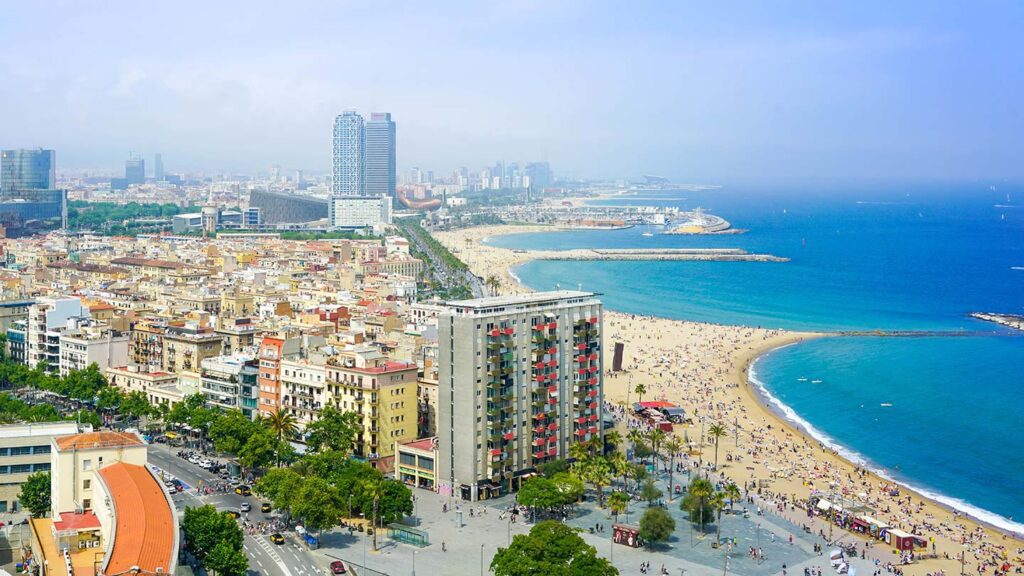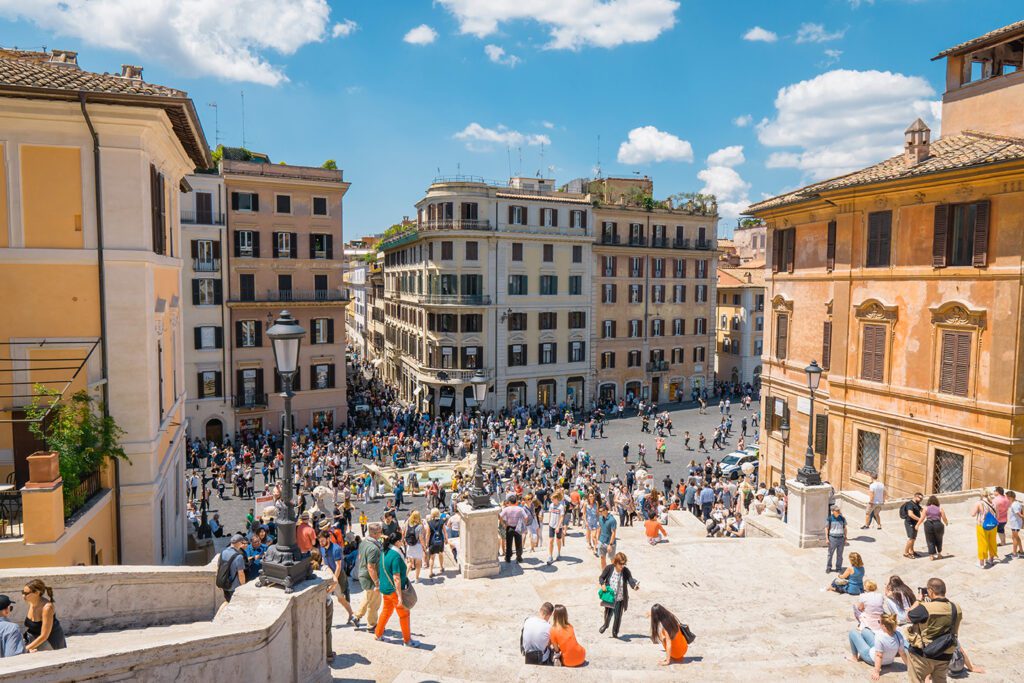Planning the budget for your next getaway? Don’t forget to factor in tourist taxes. These sneaky little fees pop up in destinations across the globe – from a few euros per night in different cities and countries across Europe, to percentage-based charges in the U.S. and Asia.
Tourist taxes help governments manage crowds, fund infrastructure, and preserve cultural landmarks. That sounds reasonable –but how much are you paying, and where are the costs the highest? Let’s break down what tourist taxes are, how they work, and what to expect in various countries and destinations across the globe.
1. What is a tourist tax?
Tourist tax – sometimes called lodging tax, city tax, or occupancy tax – is a fee charged to travelers when they stay overnight in a destination. The money is collected by local or national governments to support tourism infrastructure, cultural preservation, and environmental sustainability.
Tourist taxes are common in Europe, Asia, and the Americas, and each place has its own rules, rates, and reasons for charging them. As a tourist, you rely on city governments to provide water, garbage collection, city cleaning, public transport and more – so these fees make tourism more sustainable.


2. How does tourist tax work?
Tourist taxes are typically applied per person, per night, and are collected directly by hotels, hostels, B&Bs, or vacation rentals. In most cases, you’ll see the charge itemized on your bill at check-out, though in some countries, it’s included in the booking price.
The rate might be a flat fee (like €2 per night) or a percentage of your room cost (commonly 5–10%). Local governments then use this revenue to fund services like public transportation, waste management, heritage site upkeep, and tourism marketing. Some destinations exempt children or offer discounts during off-peak seasons.
Sometimes you’ll be asked to pay the tourist tax in person or in cash, which can feel like a scam. It pays to do some quick research to find out what percentage or fee you should be paying in each city or destination.
When you book a Trafalgar tour, you can travel with complete peace of mind knowing that all tourist taxes and fees are fully included in the tour price. This means no surprise charges or hidden costs during your trip – just seamless, hassle-free travel. Trafalgar takes care of all city levies to accommodation taxes so you can focus on enjoying your adventure to the fullest.
3. Which country has the highest tourist tax?
The Bhutan government charges one of the world’s highest: a Sustainable Development Fee of $100 per person, per night (reduced from $200 in 2023). This fee is part of the country’s “high value, low impact” tourism model designed to preserve its culture and environment.
In Europe, both Switzerland and Austria are among the continent’s priciest, with local taxes that can reach CHF 5–7 per night.
In the U.S., hotel taxes can exceed 17% of the bill in cities like New York.
In most places, it is just a few dollars a night – but that can add up fast, especially on longer stays.
4. Tourist tax in USA


In the United States, there’s no national tourist tax – but many cities and states charge taxes on accommodations that can add up fast. These are usually applied as a percentage of the room rate, often bundled under names like “hotel tax,” “occupancy tax,” or “transient lodging tax.”
Rates vary by city and state. For example:
- New York City charges up to 14.75% plus $3.50 per night.
- Los Angeles adds 12%.
- San Francisco adds 14%.
- Hawaii’s state tax is 10.25%, and if you stay in Honolulu add an additional 3%.
- Houston hits a whopping 17% in combined state and city taxes.
These taxes help fund everything from tourism promotion to local infrastructure, and they’re automatically included in your final hotel bill.
Tour not found.5. Tourist tax in Mexico
All hotel stays in Mexico include a 16% value-added tax (IVA) – this is the standard federal sales tax applied to goods and services. On top of this, most states levy a local lodging tax, usually ranging between 2% and 5%, depending on the region. This is the tourist tax and it will be added to your hotel bill.
Here’s how it breaks down in a few regions:
- Mexico City: 3% lodging tax
- Baja California Sur (e.g., Cabo San Lucas): 4% lodging tax
- Quintana Roo (e.g., Cancún, Playa del Carmen, Tulum): 3% lodging tax, plus more
- Yucatán: 5% lodging tax
6. Tourist tax in Spain


Spain applies localized tourist taxes in most major destinations. In Catalonia (including Barcelona), expect to pay a regional tax of €1.20-€6 per person per night plus a €4 city surcharge – this can push the daily tax above €10 per person, per night!
In the Balearic Islands, seasonal “sustainable tourism” fees range from €2-€4/night during peak season, with reduced rates off-season. And some quieter regions like Santiago de Compostela, Toledo, and some parts of Andalucía are now introducing similar levies.
7. Tourist tax in Italy


Italy’s tourist tax, known as the imposta di soggiorno, varies by city, accommodation type, and season. In Rome, rates range from €4 per night at 1-star hotels to €10 at 5-star establishments, applicable for up to 10 consecutive nights.
Florence charges between €3.50 and €8 per night, while Milan’s rates span from €2.50 to €5. Venice has introduced a day visitor fee of €5, increasing to €10 for last-minute bookings, applicable on select days.
READ NEXT: 30 smart travel hacks that save you time, money and stress
Tour not found.8. Tourist tax in France


France’s taxe de séjour (tourist tax) is a per-person, per-night fee set by local municipalities to fund tourism infrastructure and services. Rates vary based on accommodation type and location.
In Paris, as of January 2025, the tax ranges from €0.65 for basic campsites to €15.60 for luxury hotels per person, per night. But additional regional surcharges may apply – for instance, Île-de-France has a 200% surcharge to support local transport. Good news: children under 18 are typically exempt.
It’s advisable to check local rates before booking, as these taxes are usually paid directly to the accommodation upon check-in.
9. Tourist taxes in other European countries
Beyond Spain, Italy, and France, many other European countries have embraced tourist taxes to help support services in popular destinations.
- In Germany, cities like Berlin and Munich charge around €2-€3 per person per night, depending on accommodation type.
- Austria applies fees ranging from €1.50 to €3.50, with Vienna and Salzburg leading the way.
- In Switzerland, tourists pay up to CHF 5-7 per night in hotspots like Zurich and Lucerne.
- Portugal’s Lisbon and Porto levy modest charges of about €2 per night, which help fund cultural and environmental preservation.
READ NEXT: These are the top 10 most sustainable cities in the world
10. Tourist tax in Japan


Japan introduced its accommodation tax in 2017 to help manage the surge in tourism. The tax varies by city but is typically a flat fee per person, per night, ranging from 200 to 500 yen (about US $1.50-$4).
For example, Tokyo charges 100 yen for rooms under 10,000 yen per night and 200 yen for pricier stays, while Kyoto applies a tiered system from 200 to 500 yen depending on your room rate. This tax is usually added to your hotel bill.
11. Tourist tax in New Zealand


New Zealand introduced the International Visitor Conservation and Tourism Levy (IVL) in 2019. Why? So that international visitors contribute to the costs of maintaining services, experiences, and infrastructure they use during their stay.
As of October 2024, the IVL is a flat fee of NZD $100 per person. This levy supports various projects, including conservation efforts, infrastructure development, and tourism services.
Note that the IVL is applicable to most international visitors, with exemptions for New Zealand and Australian citizens, permanent residents, diplomats, and nationals from certain Pacific Island countries.
Tour not found.12. Tourist tax in Australia


Some cities and states in Australia charge small fees or taxes related to tourism activities. For example, the state of Queensland charges an Environmental Management Charge on certain tours and activities in the Great Barrier Reef area to support conservation efforts.
But international visitors will pay a Passenger Movement Charge (around AUD $60), included in airfare, which helps fund border control and immigration services.
That’s our quick guide to tourist taxes across the world. As always, do your research before you travel to avoid any surprises or potential scams…